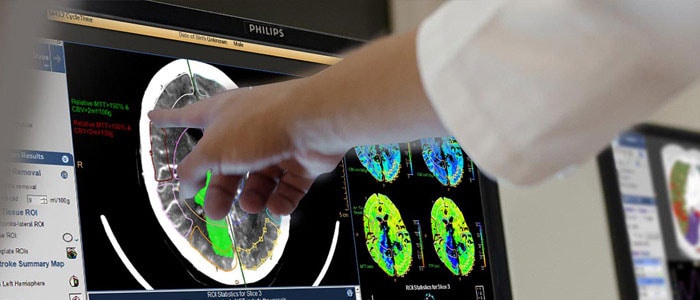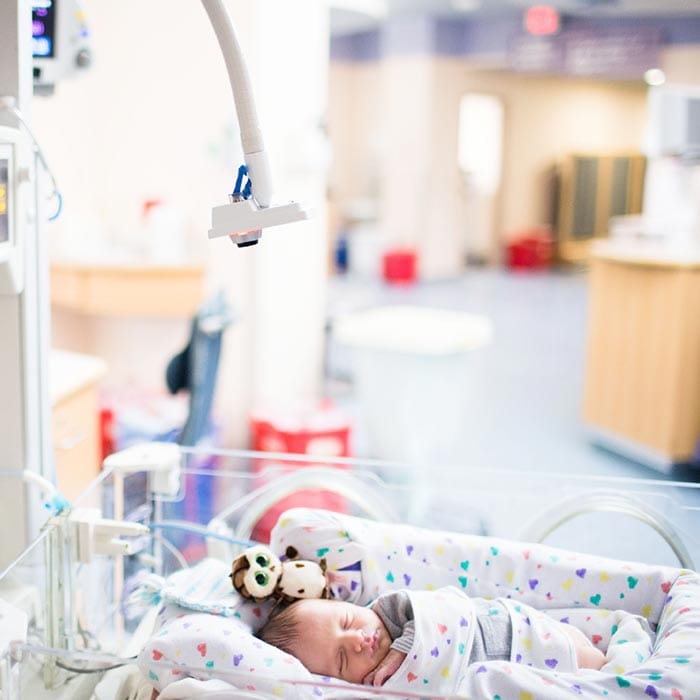
Health knows no bounds
Interoperability in healthcare at an enterprise wide level
Health professionals:
talk to us about your biggest challenges
Health professionals:
talk to us about breaking boundaries
Fill out our form or call us at 978-659-3500 (8 a.m. - 6 p.m. EST)

Executive Insights series
Podcast #99 The role of interoperability in the future of healthcare
with Philips executive Eran Rubens

More connected health devices, hidden pockets of unstructured data and systems that don’t talk to one another – these have all complicated the goals of healthcare CIOs as they look to improve operational and clinical efficiency. Host Dennis de Costa talks to Eran Rubens, Chief Technology Officer for Enterprise Imaging at Philips, about how complexity facing healthcare IT leaders can be addressed through more interoperability and standardization.
Healthcare data interoperability is key
Healthcare IT leaders are juggling an array of challenges as healthcare continues its shift to more value-based care models. Their technology landscape is expansive and complex: every department has its own IT system – from emergency services, to imaging, laboratories and patient wards - it is a multi-faceted patchwork of technologies. With the sheer volume of healthcare data a hospital collects every day, they are challenged to make sense of it to support physicians, drive efficiency and deliver improved patient outcomes. The rise of connected medical devices, hidden pockets of unstructured data and a lack of interoperability between systems inhibits their ability to do more with the data they collect.
Big data, increasing complexity
Anecdotally, healthcare CIOs believe their biggest challenge is using these huge volumes of data to improve the organization and support the delivery of quality care. But the growth of new technologies, alongside existing ones, has created huge complexity in their IT systems. Picture a single patient in an ICU anywhere in this country. During just one hospital stay, that patient has many contact points—from medical devices and imaging modalities to PACS and clinical informatics systems. In emergency and operating rooms, intensive care and step-down units, devices and systems generate volumes of data that are critical to clinical decisions. Ten medical devices are connected to that single patient, and each device is producing data every few seconds or minutes. Now imagine the data generated by millions of patients in healthcare settings across this country; patients served by radiology, cardiology, oncology, and other departments, all connected to multiple devices generating volumes of data. “Healthcare is growing more and more complex,” says Eran Rubens, chief technology officer for enterprise imaging at Philips Healthcare. “We now have new types of data getting generated with increased digitization, such as digital pathology and genomics, generating tremendous amounts of data at astonishing rates.”
Meaningful use through interoperability standardization
Connecting disparate medical systems and wrangling patient record data from siloed hospital departments is important for several reasons – extracting data from hidden siloes takes valuable time away from the patient. There is also the chance that critical data could be missed. “Many systems were designed in days where they were just islands of information. The need to share the information wasn’t there and the need to put all the dots together, or connect the dots wasn’t that strong,” says Mr. Rubens. The ability for devices and systems to connect with each other and share data has the potential to enable a 360-degree view of the patient’s health, allowing clinicians to make faster, more responsive decisions, which is behind the drive to prioritize interoperability in hospital IT systems. Interoperability means that data can travel across vendors and health systems to facilitate access to high-quality care, regardless of the patient’s physical geography. Achieving true interoperability is a complex endeavor, whether it is a medical device integration or the seamless connection of multiple systems, applications, departments, and institutions. “The fact that these systems were not designed to be interoperable from the get go, means you have a tougher challenge to solve now because you cannot replace all those systems overnight,” says Mr. Rubens. He adds: “The opportunity is really to use interoperability layers and solutions that allow you to still connect these systems and extract meaningful information from those systems, normalize that data as necessary, without forcing you to undergo big forklift replacements of these solutions.” Although standards organizations have made significant strides, and regulatory incentives, such as meaningful use, have encouraged vendors and healthcare providers to improve system interoperability and content sharing, data inconsistencies and data quality issues persist. While the challenges are many, so are the opportunities to positively influence patients and providers through more integrated care delivery models. An enterprise-wide interoperability strategy can ensure that insight-rich data is put to meaningful and appropriate use, helping to transform the delivery of healthcare for everyone, connecting the dots, removing disconnects, and sharing data to the benefit of everyone.
Share this page with a colleague

You might also be interested in:
Meeting the top
challenges in
health informatics




Building partnerships.
Breaking barriers.
We work in partnership with health systems to help drive innovation, support their financial and operational goals, and enable their transformation in a value-driven era. The result can be both operational excellence and more connected, predictive and personalized care delivery.
Let's talk

What are your biggest challenges in informatics? Whether its interoperability across your enterprise or achieving greater standardization of care, we partner with you to deeply understand your infrastructure and operations, and deliver solutions that help your transform your health system. Reach out using the form below to get started.










